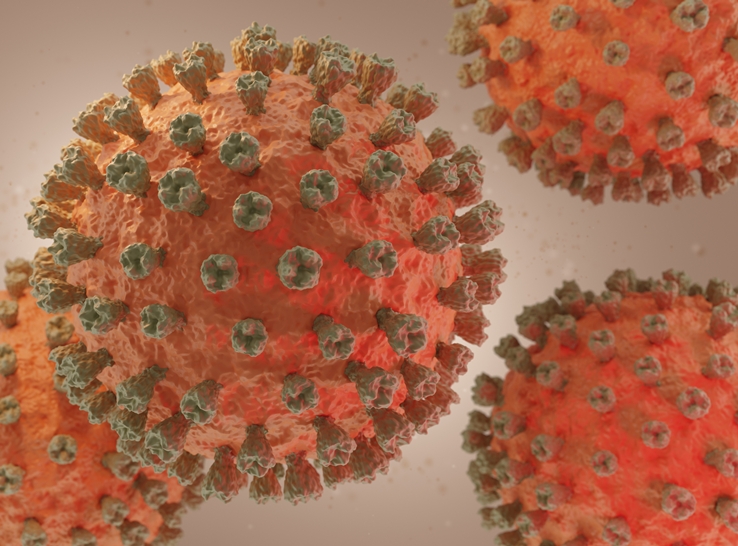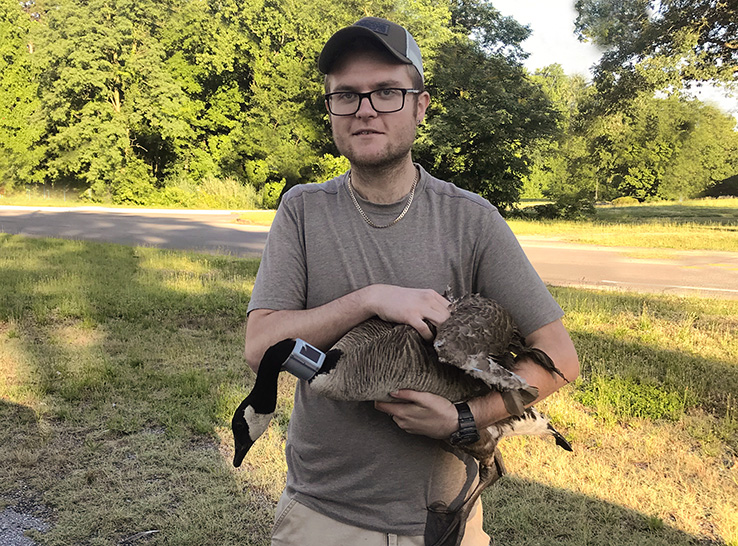In response to the ongoing H5N1 avian influenza outbreak and questions surrounding the use of vaccination to control the disease, several experts from the American Association of Avian Pathologists (AAAP) created a fact sheet on H5N1.
1. Why are we concerned about the H5N1 3.4.4b HPAI outbreak?
The H5N1 2.3.4.4b clade Gs/GD Eurasian lineage high-pathogenicity avian influenza virus (HPAIV) has created a panzootic in poultry, wild birds and domestic and wild mammals. The number of poultry deaths and poultry culled exceeds that of the other 51 HPAI epizootics that have been documented in poultry in the modern era combined.
Historically, the principal HPAI-control strategy has used the following methods:
- Enhancements to biosecurity to prevent exposure and subsequent infection
- Surveillance to find virus-infected flocks
- Stamping-out to eliminate infected flocks and prevent farm-to-farm spread
These methods have been highly effective in eradicating emergent HPAIV outbreaks (i.e., low-pathogenicity avian influenza virus that mutated to HPAI but did not spread widely), such as the 2020 H7N3 HPAI outbreak in South Carolina turkeys.
However, the 2.3.4.4b HPAIV has become uniquely endemic in wild birds and provides an ongoing risk of introduction into US poultry flocks. The high susceptibility of egg-type chickens, turkeys and domestic ducks only requires a small amount of virus to initiate the infection cycle within a farm. The current program of biosecurity, surveillance and stamping-out is unsustainable against the threat of clade 2.3.4.4b HPAIV.
2. What can vaccines and vaccination do?
Antigenically close-matched vaccines, when applied correctly, will produce a robust protective immune response that increases a bird’s resistance to infection, as evidenced by requiring a higher dose of HPAIV to produce infection. In addition, many fewer birds will become infected, and those infected birds will have reduced viral shedding. This will reduce environmental contamination, helping to break the transmission cycle and stop the spread.
The vaccine must be applied to immune-competent poultry and follow the vaccine manufacturer’s recommendations for route of administration, age and application dose.
3. What are the limitations of vaccines and vaccination in HPAI control?
Vaccination cannot replace biosecurity, surveillance and stamping-out of virus-infected flocks. Antigenically mismatched vaccines will not adequately protect the birds nor stop outbreaks and can accelerate the emergence of vaccine-escape mutants. Vaccination crews must practice the highest level of biosecurity to avoid spreading HPAIV between farms.
4. Are H5 vaccines against HPAI available in the US?
There are five types of USDA-licensed H5 HPAI vaccines for poultry:
- Inactivated oil-emulsified whole avian influenza virus
- DNA
- RNA particle
- Recombinant fowlpox virus with H5 influenza gene insert
- Recombinant herpesvirus of turkey with H5 influenza gene insert (rHVT-H5)
However, only an inactivated oil-emulsified whole avian influenza virus vaccine, an RNA particle vaccine, and two rHVT-H5 vaccines have demonstrated efficacy against circulating H5N1 2.3.4.4b HPAIVs in experimental vaccination and challenge studies at the USDA/Southeast Poultry Research Laboratory. Additional vaccine-efficacy studies against European 2.3.4.4b HPAIVs have been demonstrated in the Netherlands, Italy and Belgium.
A single dose of vaccine is unlikely to provide long-term protection, and previous experience indicates that at least one or two boosters are required to maintain protective levels. Studies are ongoing to evaluate the length of protection of different vaccine approaches, and a current field trial in egg-laying chickens has shown protection through 24 weeks of age in egg-type chickens in the Netherlands. This study will continue through 80 weeks of age.
The USDA-licensed vaccines require injection in ovo, subcutaneous (SQ) or intramuscular (IM) into individual birds.
5. Can we use the USDA-licensed vaccines now?
Poultry field application of the vaccines requires both USDA and individual state approval. HPAI vaccination in the US has been approved and implemented to protect the endangered California condor. However, poultry vaccination has not been approved because of concerns surrounding potential non-tariff trade barriers on US poultry and poultry products, primarily chicken meat and poultry genetic stocks.
The vaccines licensed in the US currently have a reasonable expectation of protection if properly applied. Additional types of vaccines are likely to become available if vaccines were allowed for use in the US.
6. Could the USDA-licensed vaccines be applied to poultry?
Multiple current licensed vaccines are fit-for-purpose, having both demonstrated efficacy against 2.3.4.4b HPAIV and a logistical fit within the current injectable vaccination process used to control endemic diseases of high individual-value egg-laying chickens and turkeys.
The vaccines can be administered in ovo or 1– day of age by injection in the hatchery or by SQ or IM injection in the field, depending on the individual vaccine technology. Birds should receive a minimum of two doses of vaccine but may require additional booster vaccinations to maintain protection throughout a long production life cycle, which is impacted by the vaccine technologies used.
Booster vaccinations should be determined by active monitoring of antibodies in vaccinated flocks. Vaccination should be used only as a targeted process in high-risk poultry, such as egg-laying hens, and pullets and turkeys, in specific geographic areas.
Consideration should be given to the development of vaccination areas or zones, based on state and/or county level, with the lowest impact on broilers for export markets.
7. Are silent infections common in vaccinated poultry flocks?
Properly vaccinated, well-managed flocks using matched efficacious vaccines will have uncommon HPAIV infections, as has been demonstrated in the well-managed France and Hong Kong SAR vaccination programs.
8. Does the US have an HPAI vaccine bank?
The USDA funded and maintained an H5 HPAI vaccine bank in the latter half of the 2010s. No vaccine bank exists today, but some of the USDA-licensed vaccines (e.g., rHVT-H5) are routinely produced in commercial quantities and exported for application in other countries. Such existing vaccine production could be increased for use in the US.
9. Should vaccinated flocks be monitored for protection?
Programs to evaluate the level of protection elicited by vaccines to assure adequate flock coverage are recommended. Statistical sampling of individual-bird protective-immune responses and their collective evaluation to determine flock immunity are critical for determining the success of the vaccination program.
Such monitoring can include assessment of humoral immunity for all vaccine types through H5 hemagglutination-inhibition and H5 enzyme-linked immunosorbent assays, as well as assessment of vaccine virus replication in the feather follicles or spleens of rHVT-H5-vaccinated poultry. Additional assessments of cellular immunity and mucosal immunity can be done on a limited, ad hoc basis.
10. Should surveillance be conducted in vaccinated flocks?
Detection of infections in vaccinated flocks (i.e., DIVA) can be accomplished by serological and/or virological methods. The goal of surveillance is to detect HPAIV infections, as the presence of sustained virus transmission is the risk.
Any infected flocks should be stamped out. Surveillance should be reasonable (i.e., similar sensitivity and specificity for vaccinated and non-vaccinated flocks), cost-effective and sustainable. It should be primarily virological, using highly sensitive and specific real-time reverse transcription polymerase chain reaction on targeted samples.
The samples should focus on daily mortality, supplemented by sick birds, which are a naturally occurring susceptible minor population of birds that did not develop a protective immune response. Using random samples of asymptomatic chickens and turkeys would be an inefficient use of resources because, in a properly vaccinated flock, most will be immune and not excreting high levels of virus.
Environmental samples, such as drinker swabs, should be considered for further validation studies, as they have the potential to be a low-cost alternative sample for early detection of infections in both vaccinated and non-vaccinated flocks.
All vaccines are compatible with virological surveillance for detecting active HPAIV infections. Serological surveillance can provide information about exposure for the life of the flock, but the approach to testing depends on the type of vaccines used; with some vaccines, this may be impractical to implement.
For vaccines that contain only the H5 protein they are compatible with, current serological surveillance assays can detect antibodies to the nucleoprotein. Inactivated whole-virus vaccines require a heterologous neuraminidase and companion neuraminidase antibody test. Infections with other avian influenza viruses, as well as false-positive results, require retesting with more specific and sensitive serological assays to confirm clade 2.3.4.4b HPAIV antibodies, along with use of virological surveillance follow-up to identify active virus infection in birds.
Contributors to this fact sheet were:
- Suzanne McComb, DVM, MAM, ACPV Diplomate, AAAP Executive Vice President
- David Swayne, DVM, Birdflu Veterinarian LLC
- David Suarez, DVM, PhD, DACVM
- Erica Spackman, PhD, Southeast Poultry Research Laboratory
AAAP has developed a position statement on H5 influenza. Click here to read the statement.
Editor’s note: Content on Modern Poultry’s Industry Insights pages is provided and/or commissioned by our sponsors, who assume full responsibility for its accuracy and compliance.









